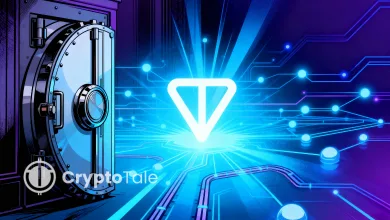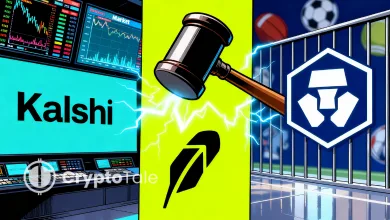How Altcoin Miners Drive Blockchain Security and Growth

Cryptocurrencies have entered the world and opened up a new economy and at their core is the use of blockchain technology mined by individuals in the network. Although Bitcoin is the most popular cryptocurrency, altcoins have also gained an important position in the crypto market. These networks need miners who mine altcoins to secure them and fuel their development. Here is how they help the blockchain environment.
What Is Altcoin Mining?
Mining is the process of solving mathematical puzzles and adding new transactions to the blockchain. To solve these algorithms, miners apply computational force, which leads to the creation of new blocks. However, mining altcoins follows the same process as Bitcoin mining but has its own set of algorithms or consensus mechanisms, such as PoS or PoW.
For instance, Ethereum, before switching to PoS, used to depend on miners to protect the network. While Litecoin and Dogecoin also use Scrypt, Monero has paid more attention to privacy through its RandomX algorithm. These differences make altcoin mining rich and unique.
Enhancing Blockchain Security
Security is one of the biggest concerns of blockchain technology. Altcoin miners maintain the efficiency and effectiveness of their respective blockchains.
Transaction Validation
Miners cement a transaction’s authenticity through the consensus mechanism. This process allows all stakeholders to agree on the blockchain’s state. Once transactions are authenticated, they are grouped into a block and cannot be altered.
Preventing Double-Spending
Double spending occurs when a given cryptocurrency is used in more than one transaction. Miners avoid this by validating every transaction using the blockchain records.
Decentralization
Decentralized mining minimizes the chances of a centralized model failure. Due to the dispersion of miners worldwide, it is difficult for malicious actors to attack the network.
Defense Against Attacks
Mining provides security because a 51% attack is expensive and complicated. In such an attack, an attacker has to acquire control over more than half of the network’s computing power to alter the information stored in the blockchain, which is rather unprofitable and difficult.
Fostering Network Growth
Altcoin miners play a vital role in expanding the supply of new tokens, thereby helping to grow the ecosystems. The increase in supply makes the coin more available to a wider audience, thereby increasing adoption.
Token Distribution
Mining is the process of adding new coins to the market. This process can prevent token concentration to specific participants and promote a healthy ecosystem.
Transaction Processing Capacity
Active miners guarantee that networks remain scalable when required. With increasing transaction volumes, mining assists in preserving the speed and efficiency of transaction processing.
Funding Development
Mining rewards usually help develop the ecosystem. Some networks dedicate a part of the block rewards to developing decentralized applications or improving networks.
The Economic Impacts of Mining
Mining is an essential component in building the economic base of blockchain networks and encouraging more people to participate in them. Miners bring new tokens into the market to meet the requirements of trading and investing.
Liquidity Creation
Miners will continually onboard new tokens in the market, enhancing liquidity. With higher liquidity ratios, it becomes convenient for users to trade and invest, leading to more adoption.
Incentivizing Participation
Mining rewards attract participants to the network. These incentives encourage people to be active in staking and creating dApps within the ecosystem.
Market Stabilization
Miners establish confidence in the blockchain through authorization of transactions and network protection. This trust attracts investors and users, which is crucial to the organization’s long-term success
Understanding Blockchain Technology
The role of altcoin miners is to keep exploring new possibilities of blockchain technology. Many altcoins have mining algorithms to solve problems of energy consumption, scalability, and privacy. Most altcoin networks seek to reduce the barriers of entry for mining as a means of encouraging decentralization.
Improved Algorithms
Most altcoins integrate new mining algorithms to overcome energy issues, low throughput, and privacy concerns. For example, Monero’s RandomX has been designed to greatly improve mining on CPUs while also increasing users’ anonymity.
Advancing Use Cases
Miners add value to the existing blockchain solutions, including DeFi and supply chain systems. Before the merger, Ethereum miners were among the main contributors to executing smart contracts.
Problems Encountered in Mining Altcoins
Altcoin miners encounter various problems, such as high energy consumption in Proof-of-Work mining. This has led to the adoption of better models, such as Proof of Stake, in some networks.
Energy Consumption
Proof-of-work mining is energy intensive. To tackle this problem, some altcoins are changing their models to more environmentally friendly ones, such as PoS.
Profitability
Mining profitability is directly proportional to the token price and inversely proportional to network difficulty. This means that if altcoins’ prices go down or there is an increase in competition, this has an impact on miners’ returns.
Regulatory Uncertainty
There are currently discussions around the globe on how best to regulate cryptocurrencies and mining activities. It is rather important for miners to prepare for legal shifts that can be quite different depending on the area.
The Future of Altcoin Mining
New technologies and consensus algorithms will clearly determine the future of altcoin mining. Several networks are implementing eco-friendly technologies such as PoS and hybrid systems that minimize mining’s energy consumption.
Shift to Energy Efficiency
The network is increasingly using energy-efficient consensus algorithms. Proof-of-stake (PoS) and other Proof-of-Activity models are being adopted in the market.
Compatibility with Other Current Technologies
It is predicted that mining will be connected with artificial intelligence and IoT devices. This combination could increase the system’s efficiency and scalability.
Broader Adoption
As more people shift towards using altcoins, mining will become a very important factor in terms of network security and growth. Other forms of mining and validation, like liquid staking, can also help the general user mine and validate more easily.
Conclusion
The truth is that altcoin miners are vital for the functioning of blockchain networks. They protect transactions, check the integrity of the blockchain, and foster the development of the ecosystem. Miners contribute to trust and economic worth and help to advance technology. Thus, the role of altcoin miners will be significant in the industry’s development in the future blockchain revolution. Their work guarantees the effectiveness, sustainability, and usefulness of decentralized systems increasingly redefining the world economy.





